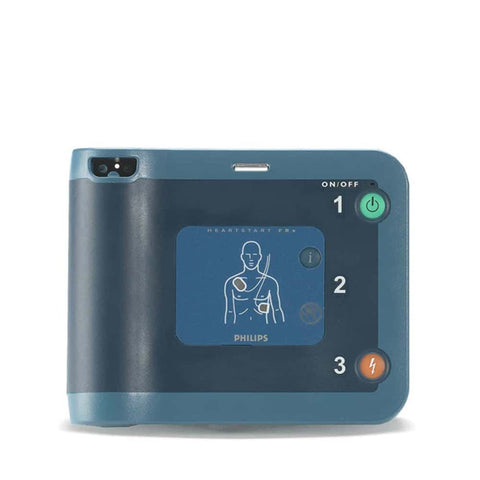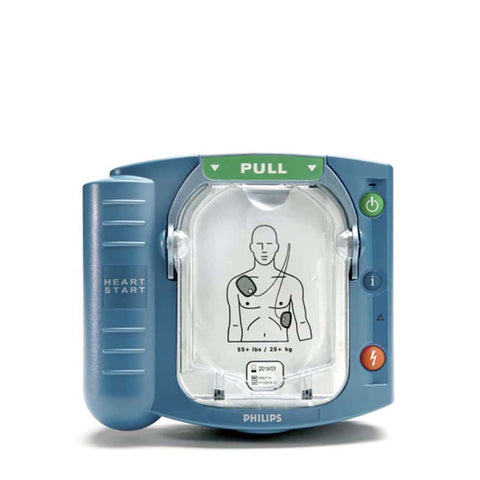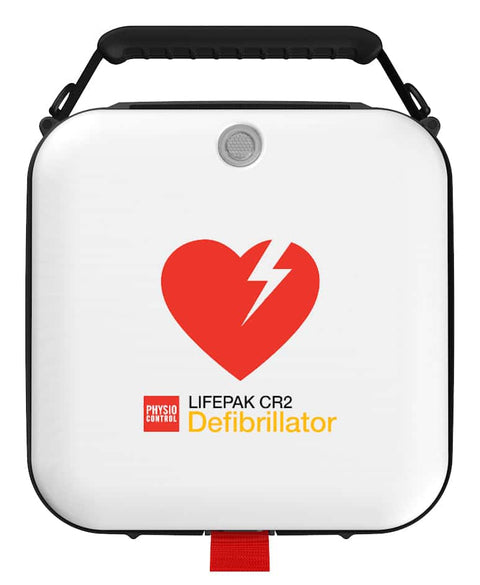Welcome September! As we enter back to school season, AED First Response is here to discuss a serious concern that often goes unnoticed – the risk of sudden cardiac arrest (SCA). While it may seem like the issue primarily affects an older demographic (which it does), schools pose a unique risk as well. Not only do they house children of all ages but also elderly staff members such as teachers, janitors, or administrators. Similarly, there are large gatherings such as sporting events, theater productions, and community meetings. All these items increase the risk that a sudden cardiac event will happen.
But what can schools do to be ready? The answer lies in AED preparedness. In this blog post, we'll explore why Automated External Defibrillators (AEDs) are essential in schools, provide statistics on cardiac arrest incidents, and offer practical insights for getting AEDs for your school.
Whether you're a school administrator, parent, educational consultant, or health and safety advocate, this information is crucial for creating a safer environment for our children and school staff.
The Importance of AEDs in Schools
The potential for unexpected medical emergencies, including sudden cardiac arrest, in schools is higher than we might think. According to the American Heart Association, approximately 350,000 out-of-hospital cardiac arrests occur annually in the United States. Among these, about 7,000 are children and adolescents. Research also indicates that almost 20% of public places, including schools, experience at least one case of cardiac arrest per year. Furthermore, sports-related SCA accounted for 39% of SCA’s among those <18 years of age. Given these statistics, it's clear that investing in AEDs is not just a precaution but a necessity.
Reasons To Buy an AED For Your School Campus
AEDs have been approved around the world for over three decades. It is believed they have saved 3 million people. Here’s why you should buy one for your school campus:
There is a Lot of Physical Activity
Physical activities like sports, gym classes, or even simple playground games can sometimes trigger cardiac emergencies in children or teens. While it’s unsettling to consider, preparedness is key to ensuring the safety of everyone involved, whether it's a Friday night football game or a game of tag at recess.
There is a Broad Mix of Age Groups
Schools don’t just house young, fit children and teens but also older teachers and employees who may have pre-existing health conditions. These individuals are at a much higher risk of experiencing cardiac events and will need an AED in the event something happens.
It Minimizes Emergency Response Time
In a cardiac emergency, every second counts. Having an AED on-site allows for immediate intervention without having to wait for an emergency response, which is critical as survival rates drop significantly with each passing minute.
There Are Legal Requirements
Some regions have laws requiring AEDs in schools. For instance, in the United States, many states have enacted legislation that mandates AEDs in public and private schools to ensure better emergency preparedness.
Legal Requirements for AEDs in Schools
So, now that we've discussed why having an AED in your school is so important, you might be wondering if it's required by law. The answer varies by state. Nearly half of the 50 states, including Washington, have mandates for installing AEDs on school campuses. Meanwhile, the other half do not have such requirements. However, several states are currently considering new AED legislation, so it's likely that this landscape will change in the near future.
States that require AEDs in schools include:
- Alabama
- Arkansas
- California
- Colorado
- Connecticut
- Florida
- Georgia
- Hawaii
- Illinois
- Kentucky
- Louisiana
- Maine
- Maryland
- Massachusetts
- New Jersey
- New York
- North Dakota
- Oklahoma
- Oregon
- Pennsylvania
- Rhode Island
- South Carolina
- Tennessee
- Texas
- West Virginia
- Washington
In Washington, public and private schools must comply with RCW 28A.320.125, which mandates:
- All public and private K-12 schools in Washington State must have at least one Automated External Defibrillator (AED) on their campus.
- Schools must ensure that staff members are trained in the use of AEDs and basic CPR. The training must be provided to school personnel who are likely to be on-site during school hours.
How AEDs in Schools Can Save Lives
So know that you know why you need an AED - you may be wondering how it actually works? When someone experiences sudden cardiac arrest, the heart's electrical activity becomes chaotic, preventing it from pumping blood effectively. An AED delivers a controlled electric shock to the heart, restoring its normal rhythm.
Timely Intervention: The key to survival in cardiac emergencies is immediate intervention. AEDs provide a crucial window of opportunity for resuscitation before professional medical help arrives.
User-Friendly Design: Modern AEDs are designed to be user-friendly, with clear instructions and voice prompts that guide users through each step of the process. This simplicity ensures that even individuals with minimal training can operate the device effectively.
Increased Survival Rates: Studies have shown that the use of AEDs can significantly increase survival rates in cases of sudden cardiac arrest. Schools equipped with AEDs have reported higher success rates in reviving individuals compared to those without the devices.
Immediate access to an Automated External Defibrillator (AED) could be the difference between life and death for students and staff in your school.
Hear How an AED Made a Difference for School Staff and Educators
AED First Response provides friendly, professional and comprehensive service for our mid-size school district with 18 AED devices. Our students, staff and families are safer because of our partnership. Our district has been a satisfied customer for 20 years.
-Shelley, RN, School District Nurse
How to Obtain an AED for Your School
Securing an AED for your school involves several important steps. Start by evaluating your school's size and layout to determine how many AEDs you'll need and where they should be placed. Larger schools will need more of them in different locations—such as the gymnasium, main office, and nurse's office. Having them close to after-school athletics and programs is key.
Next, explore our range of "AED products for schools" listed at the end of this blog. For tailored assistance in selecting the right AED for your school, contact us at AED First Response at 888.462.9502. We're here to guide you through the selection process and ensure you get the best equipment for your needs.
How Do You Implement an AED Program in Your School?
Getting an AED in your school is just a start. You need to follow certain procedures to ensure that when time comes that a cardiac event happens you and the school personnel are prepared. Here's a few tips on how to implement an AED program in your school:
Name an AED Program Manager
Designate a dedicated AED Program Manager to oversee the implementation and maintenance of your school’s AED program. This individual will be responsible for coordinating the purchase, placement, training, and ongoing management of the AEDs, ensuring the program runs smoothly and effectively. It is typically the responsibility of school nurses, athletic trainers, or athletic directors, but it can be anyone who is on campus daily.
Secure Funding and Purchase an AED
Identify and secure the necessary funding to purchase AEDs for your school. Explore options such as school budgets, grants, or community donations. Once funding is secured, select and purchase high-quality AEDs from AED First Response. Just give us a call at 888.462.9502 and we’ll help guide you through the selection/purchase process.
Place AEDs in the Proper Location
Identify strategic locations where AEDs can be easily accessed in case of an emergency. Consider high-traffic areas and places where students and staff frequently gather, such as the gymnasium, main office, and cafeteria. Don’t forget about athletic pavilions, gyms and sports fields. Ensure that AEDs are mounted in clearly marked, easily accessible cabinets. These cabinets should be prominently placed and well-lit to ensure they are visible even in low-light conditions.
AED Training For School Staff
Arrange for AED training sessions for all school staff, including teachers, administrators, and custodians. Contact a certified organization or instructor for CPR and AED training. Here at AED First Response we can help set you up with local resources for training.
Spread Awareness of the AED Program
Promote awareness of the AED program within the school community. Inform students, staff, and parents about the location of AEDs, the importance of the program, and who to contact in case of an emergency. This can be done through weekly newsletters, signs around the school, and announcements over the intercom or in certain classes.
How to Maintain Your School’s AED
At AED First Response, we’re committed to supporting schools not only in acquiring AEDs but also in maintaining them. AEDs are relatively easy to maintain, needing only periodic battery and pad replacements. To help with this, we offer a reminder program that notifies you when it’s time to replace these essential components. Partnering with us ensures that your school’s AED remains reliable and ready for emergencies, giving you confidence that you’re well-prepared.
FAQs about AEDs in Schools
Are AEDs Safe to Use on Kids?
Yes, AEDs (Automated External Defibrillators) are safe to use on children. However, there are specific considerations to keep in mind, such as getting child-specific pads and adjusting the shock level to be appropriate for younger patients, typically under the age of 8 or weighing less than 55 pounds.
Do we need to train staff on AED use?
Yes. Washington State requires you to train all staff personnel on staff members on the use of AEDs and basic CPR.
Do we need to train students on AED use?
While it's not mandatory, training older students on AED use can be beneficial. It fosters a sense of responsibility and preparedness, ensuring that more individuals are capable of responding in emergencies.
How many AEDs will my school need?
The number of AEDs needed depends on the size of the school and its layout. Generally, one AED is recommended for small schools, while larger schools or those with multiple buildings may need multiple units placed in key locations like the gym, main office, and cafeteria.
How often should AEDs be maintained?
AEDs should be inspected regularly to ensure they are in good working condition, but the good news is they don’t need much maintenance. Check the battery and electrode pads' expiration dates, and replace them as needed. Here at AED First Response, we have a reminder program that you can enroll in that notifies you when it is time to replace the pads and batteries so you won’t forget!
Are there legal requirements for AEDs in schools?
Legal requirements for AEDs in schools vary by state. Some states, including Washington, mandate the presence of AEDs in public and private schools. Check your local laws and regulations to ensure compliance.
How often does a cardiac arrest emergency occur on a school campus?
While the overall incidence of cardiac arrest emergencies on school campuses is relatively low, the need for readiness is significant. Statistics reveal that approximately 2 out of every 50 U.S. high schools can expect to encounter a sudden cardiac arrest (SCA) event each year. Additionally, SCA is the leading cause of death on school campuses and the top cause of death among student-athletes. Given these concerning figures, having an AED on-site is crucial for ensuring immediate response and potentially saving lives.
Reach out to AED First Response To Secure an AED for Your School Today
Contact AED First Response today at 888.462.9502 or email customerservice@aedfirstresponse.com to find the ideal AED for your school. Our team will assist you through every step of the process, helping you select the best option for your needs. With AED First Response, you can expect a smooth, professional, and friendly experience, with a team committed to ensuring the safety of your students and staff.








